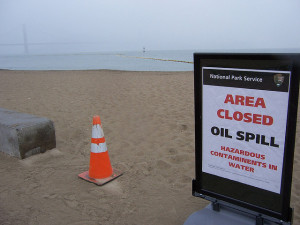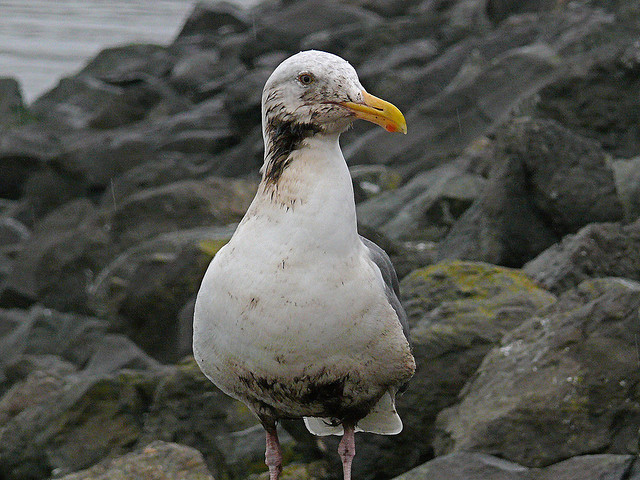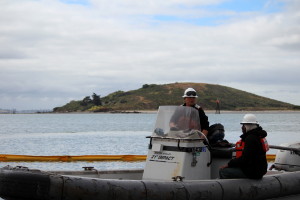Each year millions of gallons of oil and refined petroleum products are transported across the San Francisco Bay. Add to this, five oil refineries, several major shipping channels, and countless recreational boats and you have the potential for one big oil spill.
The Deepwater Horizon spill in the Gulf of Mexico, the largest environmental disaster in U.S. history, was a reminder of how bad a spill can get, and how desperate officials were at the time to find a solution to break up the slick.

But since then, as stories have emerged from the Gulf of Mexico of the lingering environmental effects of chemical dispersants, there has been an increased effort to improve oil spill prevention and response, culminating in a recent landmark court settlement.
The case, filed in the U.S. District Court for the Northern District of California by environmental groups, challenged California’s oil spill response plan (and those of Arizona and Nevada), as well as the nationwide practice of allowing the use of chemical dispersants without consideration of the Endangered Species Act.
The settlement requires the federal government to analyze the effects of oil dispersants prior to their use to determine whether these toxins will harm endangered wildlife and their habitats. The parties to the lawsuit include the Center for Biological Diversity, Surfrider Foundation and Pacific Environment against the U.S. Environmental Protection Agency (EPA).
“Part of the impetus for the case was what happened with the Deepwater Horizon incident in the Gulf of Mexico and the unprecedented use of dispersants,” said Deirdre McDonnell, Senior Attorney with the Center for Biological Diversity. “We realised that we really don’t know enough about whether these things do more harm than good to the ecosystem and wildlife.”
Chemical dispersants were used in the Deepwater Horizon oil spill to break up the slick into tiny droplets which, in theory, would then be eaten by microorganisms and dilute faster than if left untreated. One of the main dispersants used, Corexit 9527, has been found to increase the toxicity of oil by 52 times and is considered an acute health hazard by the Environmental Protection Agency (EPA).
“One of the studies that we had wanted the government to look at when it’s analyzing the effects on wildlife had actually determined that the toxicity of the combination of dispersants and oil was greater than the [toxicity of] oil alone,” said McDonnell, “So the question is — are we just making the oil go away from the surface?”
There have also been accounts of eyeless shrimp, high mortality rates among dolphins and damage to deepwater coral from sunken oil particles.

“The science isn’t all in, but the science that is coming in, does question the role of dispersants and whether they are doing more harm than good,” said McDonnell.
The 1969 Santa Barbara oil spill was the last time high-strength dispersants such as, Polycomplex A and Corexit, were used in Californian waters given the sheer amount of oil spewing into the ocean from offshore drilling. In the Bay Area, most oil spills occur from shipping vessel accidents such as the 2007 container ship collision, Cosco Busan. Because of the smaller scale of oil spills in the bay, other strategies are used by the California Department of Fish and Wildlife’s Office of Spill Prevention and Response (OSPR) to prevent and contain oil spills.
“The key point of the litigation is that the more we can study, analyze and plan up front, the better prepared we’ll be in the future to respond to oil spills,” said McDonnell. “We need to know what we’re doing before dumping chemicals in and hoping for the best.”
Part 2: How would the Bay Area respond to its next oil spill? We take a trip on the training exercise where California officials show off the latest techniques in oil spill containment.
Alessandra Bergamin is a Bay Nature editorial intern.




-300x240.jpg)